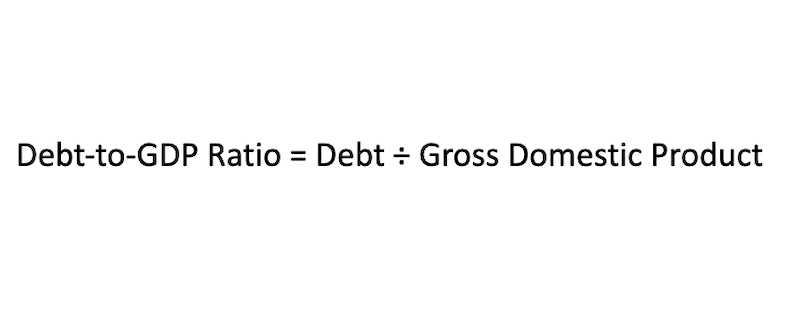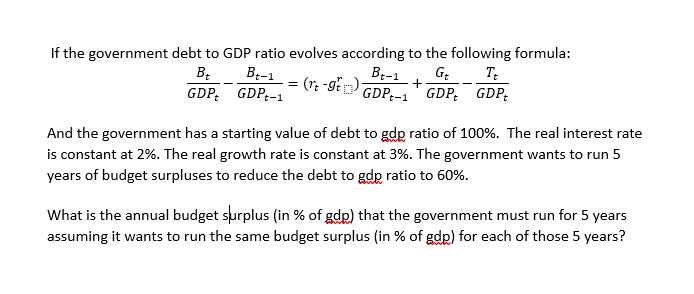What is Debt to GDP Ratio?
The Debt to GDP ratio is a financial indicator that measures the level of a country’s debt in relation to its gross domestic product (GDP). It is used to assess the sustainability of a country’s debt and its ability to repay it.
The formula to calculate the Debt to GDP ratio is:
| Debt to GDP Ratio | = | Total Debt | / | Gross Domestic Product | × | 100 |
The total debt refers to the outstanding debt of a country, including both internal and external debt. Gross Domestic Product (GDP) represents the total value of all goods and services produced within a country’s borders in a specific period.
The Debt to GDP ratio is expressed as a percentage. A higher ratio indicates a higher level of debt relative to the size of the economy, which can be a cause for concern as it may indicate a higher risk of default.
The Debt to GDP ratio is an important metric for policymakers, economists, and investors. It provides insights into a country’s fiscal health and its ability to manage its debt burden. A high Debt to GDP ratio can lead to higher borrowing costs, reduced economic growth, and potential financial instability.
The debt to GDP ratio is a financial ratio that measures the amount of a country’s debt relative to its gross domestic product (GDP). It is calculated by dividing the total debt of a country by its GDP and multiplying the result by 100 to express it as a percentage.
Formula

The formula for calculating the debt to GDP ratio is as follows:
| Debt to GDP Ratio | = | (Total Debt / GDP) * 100 |
The total debt refers to the cumulative amount of money that a country owes to its creditors, including both domestic and foreign debt. It includes government debt, corporate debt, and household debt.
Gross domestic product (GDP) is a measure of the total value of all goods and services produced within a country’s borders during a specific period. It is used as an indicator of a country’s economic performance.
Significance

The debt to GDP ratio is an important indicator of a country’s financial health and sustainability. A high debt to GDP ratio indicates that a country has a significant amount of debt relative to its economic output, which can be a cause for concern.
High levels of debt can lead to several negative consequences. It can increase the cost of borrowing, as lenders may perceive the country as a higher risk. It can also limit a country’s ability to invest in infrastructure, education, and other areas that promote economic growth.
Additionally, a high debt to GDP ratio can make a country vulnerable to economic shocks and financial crises. If a country is unable to repay its debt or service its interest payments, it may default on its obligations, leading to a loss of confidence in the country’s economy and potentially triggering a financial crisis.
On the other hand, a low debt to GDP ratio indicates that a country has a smaller amount of debt relative to its economic output, which can be a positive sign. It suggests that the country has a strong financial position and is less vulnerable to economic shocks.
However, it is important to note that the debt to GDP ratio should be interpreted in the context of other economic indicators and factors. For example, a country with a high debt to GDP ratio may still be considered financially stable if it has a strong economy, low inflation, and a manageable debt repayment schedule.

Emily Bibb simplifies finance through bestselling books and articles, bridging complex concepts for everyday understanding. Engaging audiences via social media, she shares insights for financial success. Active in seminars and philanthropy, Bibb aims to create a more financially informed society, driven by her passion for empowering others.
